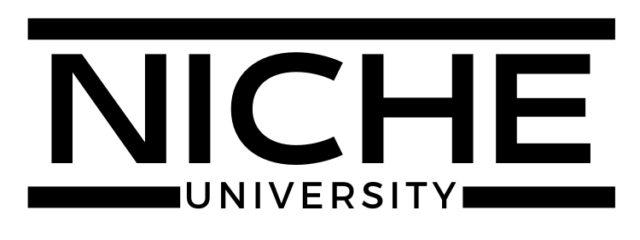Do you struggle to create compelling website content that engages your visitors? Do you find it challenging to communicate your content in a way that resonates with your audience?
If so, you’re not alone. Many bloggers and website owners struggle to create content that stands out in a crowded digital landscape. But fear not, as we’re here to help you overcome these challenges and create content that will captivate your audience.
I have compiled a list of tips and tricks below that will help you create outstanding website content. From understanding your audience to crafting compelling headlines, we’ll guide you through the process of creating content that captures the attention of your readers and keeps them coming back for more.

Take Time Crafting The Introduction
The introduction of your website content is a crucial element that sets the tone for the rest of the content.
It should be concise and clear, outlining the purpose of your website content. A great introduction should be engaging and capture the reader’s attention.
It is also important to ensure that it provides a clear and concise explanation of what readers can expect to find on the website.
Additionally, you should use relevant keywords and phrases that will help with search engine optimization (SEO).
Lastly, it is important to refresh your content from time to time by adding new information such as statistics or relevant facts about the topic.
By taking these steps, you will ensure that your introductory text will be effective in enticing readers to read more of your website content.
For myself, when I have issues with introductions or finding the right words is when I lean into tools like Jasper.ai which have tools to help build highly engaging content.
Make Your Copy Scannable
Making your copy scannable is one of the most important aspects of writing website content.
By following the inverted pyramid model and using appropriate line lengths, you can make it easier for readers to quickly scan through your content and pick out the key points.
Additionally, create a content hierarchy by breaking up long paragraphs into shorter chunks and using subheadings.
This makes it easier for readers to quickly find the information they are looking for.
By making your copy scannable, you’ll be able to engage more readers and keep them interested in what you have to say.
Find Target Keywords
Finding the right target keywords for your website content is key to ensuring that your content is engaging and can be found by the right people.
To do this, you need to research and understand what your customers are searching for.
You can gather this data by looking at your competitors, using keyword research tools, or using analytics to identify the keywords that are commonly used when customers search for your product or services.
By understanding what type of content Google is closely related to and the phrases people are using to find your content, you can identify which keywords best fit your website and target them in your content.
Follow the Inverted Pyramid Model
Once you have identified your target keywords and made your copy scannable, it is important to follow the inverted pyramid model when writing website content.
The inverted pyramid style of writing is a structure where the most important information is presented first.
This style helps to highlight the main points of the website content and provides a logical flow for readers to follow.
By presenting the key information upfront, readers can quickly decide whether to continue reading or not.
To ensure that readers are engaged, it is also important to write a compelling headline that accurately reflects the content of the page while also being engaging enough to draw readers in.
Understand what the Inverted Pyramid Model is
The Inverted Pyramid Model is an essential tool for any writer looking to create effective web content.
This model is used to organize information in a way that makes it easier for readers to comprehend and quickly find what they are looking for.
By placing the most important information at the top, readers can quickly identify the key points and then dive deeper into the details.
The model also makes it easier to break down complex topics into smaller, more manageable parts. As a result, readers can easily understand the material and make informed decisions.
Introduce the topic in the first paragraph
When writing website content for your business, it’s important to introduce the topic in the first paragraph.
This can be done by providing a brief overview of the main points of the website content.
The Inverted Pyramid Model provides a structure for organizing website content in a logical flow that makes it easier for readers to quickly understand the key points.
The first paragraph should include the most fundamental information and should be written in a clear, concise way to get your point across quickly.
Utilizing target keywords throughout this section will also help search engine algorithms index your content more efficiently.
Identify the main points of the website content
When writing website content, it is important to identify the main points of the content.
Before you start writing, think about the purpose of the website content and what you want your readers to learn from it.
For example, if you are writing about a new product, make sure you highlight the features and benefits in the text.
Once you have identified what your main points are, you can organize your content in a logical flow.
This will help readers to understand your message quickly and easily. After that, use keywords throughout your text to ensure that search engines can find your content easily.
Following these steps will ensure that your website content is engaging and informative.
Organize the content in a logical flow
Organizing your website content in a logical flow is important for readers. It allows them to quickly understand the structure of the content, and the main points it is trying to emphasize.
When writing, it can be helpful to break down your content into subheadings that are easily identifiable and make sense.
This will help readers move through the content in an orderly manner, so they can get the most out of it.
Additionally, breaking down longer pieces of content into shorter paragraphs will help make them more scannable and easier to understand.
Using these techniques can help you create content that is well-organized and engaging for readers.
Avoid Run-on Sentences
Run-on sentences can make your writing seem unorganized and difficult to read, so to avoid this, try using coordinating conjunction (for, and, nor, but, or, yet, so) after a comma.
Another relatively easy way to fix run-ons is to separate them into two separate sentences.
You can also use sentence fragments to make your content more conversational.
To further clean up your writing, go on a hunt for run-on sentences and look at each word you wrote and think about if there is a way to use one word where you wrote several.
Incorporate a thesaurus to find words that fit better or can be used to avoid repetition, or you could get a tool like Grammarly Pro which can do this in the browser interactively.
By doing this, you will be able to ensure that your website content is clear and concise for any reader.
Write a Compelling Headline
Writing a compelling headline is an essential step when crafting web content, as not only does it help draw readers in, but it also sets the tone for the rest of the piece.
With that in mind, it’s important to ensure that your headline is descriptive, yet concise.
Take the time to research target keywords and use them to your advantage.
Additionally, consider crafting an enticing title that piques curiosity and encourages readers to click through and read the rest of your content.
Finally, be sure to test different headline options to determine which one resonates best with your intended audience, this can be done with ease inside a tool like Ezoic, which offers a Title Tag A/B tester.
Understand the purpose of your headline
Understanding the purpose of your headline is essential for writing successful web content.
The most important part of any headline is the message it conveys; it should be clear, concise, and informative.
It should also grab the reader’s attention and make them want to read more.
Additionally, the headline should be relevant to the content it is introducing and should include targeted keywords.
It is also important to keep in mind that the headline should be as short as possible.
By following these guidelines, you will create an effective headline that will help draw readers in and increase engagement with your web content.
Keep it short and sweet
Writing website content should always be concise, clear, and direct. To achieve this, strive to keep your sentences short and sweet.
Long sentences can be difficult to read, so try to break them up into separate thoughts as this will help your readers better understand the message you are trying to convey.
When writing copy, make sure to avoid run-on sentences as they can be confusing and off-putting for readers, so make sure to use proper punctuation and structure when forming your sentences.
Keeping it short and sweet will make your website content more engaging and easier for readers to comprehend.
Use Catchy Headlines
Once you have identified the purpose of your headline and kept it short and sweet, it is time to make it catchy.
Using powerful words, coordinating conjunctions, and strong language will help you craft a headline that stands out.
Additionally, testing different headlines can help determine which resonates the most with your audience.
Utilizing the right headline can be the difference between an article that goes unread and one that gets shared across social media channels.
With these tips in mind, you can ensure that your website content stands out and grabs attention.
Test Your Headlines
Once you have written your headlines, it is important to test them to ensure that they are effective.
This can be done through a variety of methods, including A/B testing, surveys, and focus groups.
- A/B testing involves sending two different versions of the headline to two different audiences and then measuring the results.
- Surveys and focus groups give you direct feedback on the effectiveness of your headlines.
Additionally, you can use analytics tools to track how often readers click on your headline and how long they stay on the page.
By testing your headlines in these ways, you can make sure that you are creating content that resonates with your audience and encourages them to read more.
Conclusion
In conclusion, writing website content can be a daunting task, but following these tips can help you create effective and engaging content.
Firstly, you should make sure your copy is scannable, using short sentences and breaking up the text with headings.
Secondly, try to identify target keywords that are relevant to your content and use them in a natural way.
Thirdly, follow the inverted pyramid model by introducing the topic in the first paragraph and then identifying the main points.
Additionally, organize the content in a logical flow while avoiding run-on sentences
Lastly, write a compelling headline that is short and sweet while also being catchy.
By testing different headlines, you can ensure that you have one that resonates with readers and encourages them to click through.
Following these tips will help you write website content that grabs readers’ attention and keeps them coming back for more.
